Meet Arvind Gupta – the tech entrepreneur behind the digital revolution of BJP and Indian politics
The Bharatiya Janata Party’s landslide victory in the 2014 general elections was in large part a result of its massively successful digital campaign. And the man who scripted it was Arvind Gupta. The focus of this week’s Techie Tuesdays, Arvind joined BJP in 2010 after exiting from his second startup. He was convinced about the disruptive power of technology, even when it came to politics and democracy, and went on to prove that. The rest is history.
On the face of it, Arvind Gupta may not look like a usual techie. But after a deep-dive delve into his background, one begins to understand the role he has played in bridging technology and democracy.
An Electronics undergraduate from IIT-BHU and an MBA and MS (Computer Science) from University of Illinois, Urbana-Champaign, Arvind worked with the core team of NCSA Mosaic (web browser), the same set of people who later formed NetScape. Arvind could have joined them, but he didn’t. And does he regret that? Perhaps none.

One can say because of what he did later in his life. He founded a fintech company in 1999. Not only did he start up and exited successfully twice, but he also got a chance to write the history of Indian politics through his contribution in 2014 general elections. An active voice of the product startup ecosystem, Arvind is a techie at heart who has been influencing and impacting the lives of people through technology, entrepreneurship and democracy.
On a quiet afternoon in Lutyen’s Delhi, YourStory caught up with Arvind at his house to know more about his journey and work so far.
The boy from Lutyen’s Delhi
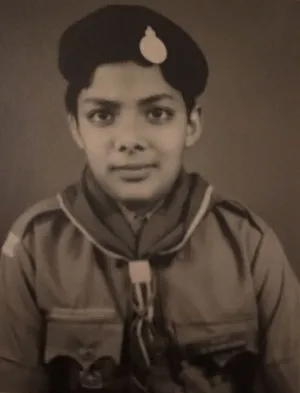
Arvind belongs to one of the old families of Delhi-6 who later moved to Lutyen’s Delhi . His grandfather was one of the few medical doctors in 1910. Even though Arvind’s family was primarily into business,, they accorded a lot of importance to education. This played a very important role in instilling family values and the value of money early in his childhood.
Arvind attended St. Xavier’s school (boys’ school then) where he forged some lifetime friendships. He also learnt the organisational skills by participating (and organising) in the Xavier Fair. He was awarded the Xavier Certificate for for allround performance.
Arvind’s parents had a lot of faith in him and his decisions. In 1988, when Arvind cleared IITJEE and chose to go to IT-BHU over IIT Roorkee or BITS Pilani where his uncles studied, his parents supported his decision. Today, Arvind considers it one of the best decisions of his life.
IIT-BHU – The beginning of Kashi yatra
Arvind was one of the few students who showed up at IIT-BHU without their parents at the time of admissions. This meant the seniors had ample opportunity to interact with him. . He enjoyed his time on the campus.
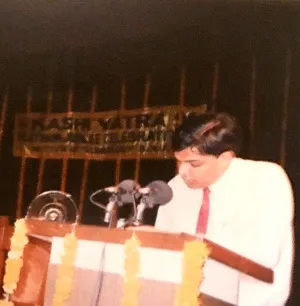
Even though he had managed a rank that made him eligible for Electronics engineering, he chose Ceramics Engineering first but changed to Electronics at the end of first year. He says,
Choice of discipline was very important to me. I thought Electronics taught you the basics of how things work internally -- communication, computer engineering, hardware, design.
Arvind also took active part in sports, co-curricular activities, astronomy and quizzing. He was the Convener for the college festival, Kashi Yatra. He recalls, “People have known me as a convener for that college festival for many years.”
While on campus, Arvind was programming on 8085 processor (in BASIC). Though college curriculum had Fortran, he learnt Pascal and C on his own. He recalls working with 5¼-inch (133 mm) floppy discs and the fact that the university computer systems had 64k RAM. He says, “Our craving for the computer time made sure that the time we spent in the computer lab was the most productive.”
Related read - Amit Ranjan—the entrepreneur who crossed the startup-government chasm
A walking dictionary of colleges
Arvind’s first entrepreneurial venture was in 1989-90, when he along with one of his friends from Hindu College started Careers Today. It was a career counseling service in Delhi for higher studies. He says,
At the time, I was a walking dictionary of US colleges. I used to keep info on all the colleges in the US for MS/MBA, their ranking, tuition fee, scholarships.
He used to frequent between Delhi and Varanasi.
The BHU experience
Arvind fell in love with Varanasi and believes that he has Kashi in him all the time. He says,
The friendship and camaraderie in BHU was very holistic. The sense of competition was very different then. People were there to support each other. The support system of students was high. That spirit of Varanasi is unique and makes you give back to the system more.
He later on started the IIT BHU Alumni Association in India.
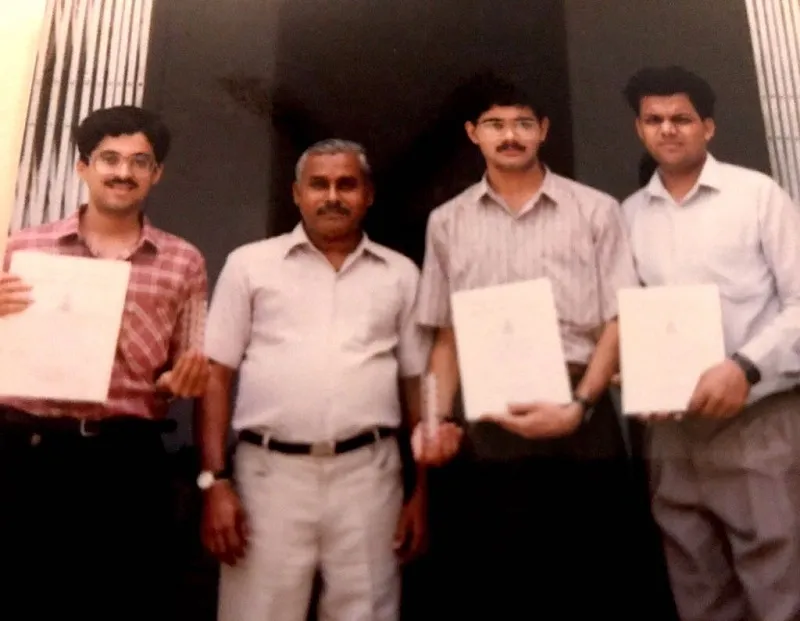
In his final year, Arvind had two high-paying job offers but he was keen to pursue higher education. What made it little difficult was the sharp increase in the value of the dollar in comparison to the rupee which made the US fee for Indians steeper. But Arvind finally managed to get admission to University of Illinois at Urbana-Champaign with scholarships for a dual degree (MBA and Computer Science Masters).
Also read - The geek from Egypt who’s taking on the world of big data – meet Cloudera’s Amr Awadallah
UIUC – where the internet was getting revisualized

Pursuing two degrees simultaneously turned out to be one of the toughest two and a half years of Arvind’s life at UIUC. The first computer science course that he took in UIUC assumed that he knew C++ and how to work on Solaris Operating system. He didn't know either.
Though MBA was relatively smoother for Arvind where he was one of the top students, he had to burn the midnight oil for computer science (which he did). He worked on his first project at Eudora. It was one of the first SMTP, POP based email clients. He says,
Internet was getting revisualised in UIUC at the National Centre for Supercomputing Applications (NCSA). That's the place where Mosaic (browser) was born.
Arvind was one of the first few guys who worked on Mosaic. His project required him to write a database (ODBC) driver to connect the browser to the database in the backend. The same project team joined Mark Andresson and became NetScape later on.
While in college, he started an online market research business. He could make surveys on a browser, connect them to database in the backend and conduct online surveys. He made some money with the idea.
The Silicon Valley magic
Arvind shifted to Silicon Valley and joined Oracle where he worked on connecting applications from the backend to a browser in the front end. He started getting active in the entrepreneurship circle and joined TiE at a very early stage. Eventually, he decided to take a plunge and at the peak of his career moved back to India to start a company. He recalls,
It was difficult to start up then. People mocked at you, didn't understand what you were doing, no employee would want to join you, there was almost no venture capital.
He had a good understanding of internet commerce and started ApnaCard along with one batchmate and a junior from college.
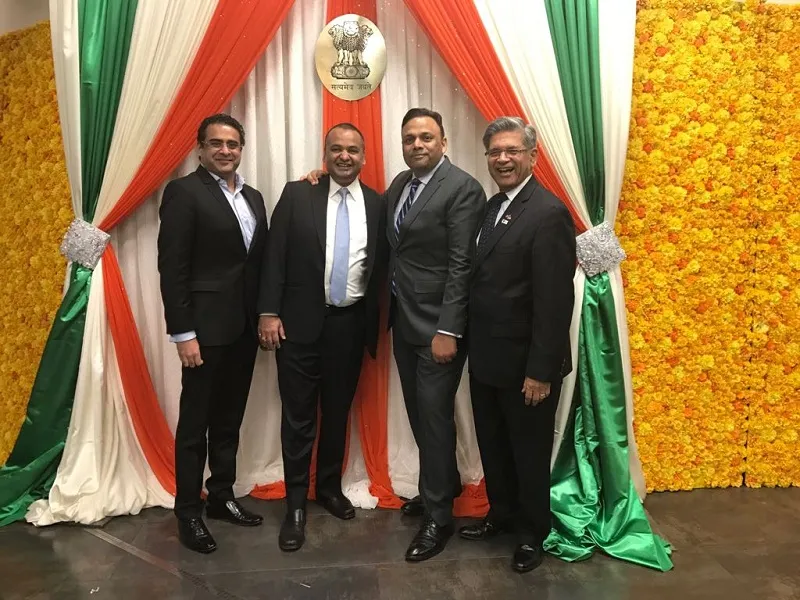
Fintech in 2000
In 2000, not many had access to credit cards, and even those who had didn't want to use it because of the rampant frauds. With ApnaCard, Arvind created a virtual web card which mimicked an actual bank card. He adds, “It was like prepaid balance, something similar to today's wallet.”
It supported P2P payments as well.
The team had a tough time getting banks onboard on his platform as not many people understood the concept. Also, internet users in India at the time merely numbered 500,000 and even assuming a 10 percent penetration for ApnaCard, the numbers (of transactions and usage) would have remained much below what Arvind would have wanted. he believes that it was too early for internet products at that time. The company then pivoted to being a technology provider rather than B2C provider and worked with 100-plus clients.
The team made a modest exit and Arvind still owns the domain apnacard.com. The tech stack was all Java, Jsp, MYSQL and Linux.
You may also like - Meet the chief architect of Aadhaar, Pramod Varma
Build-sell-repeat
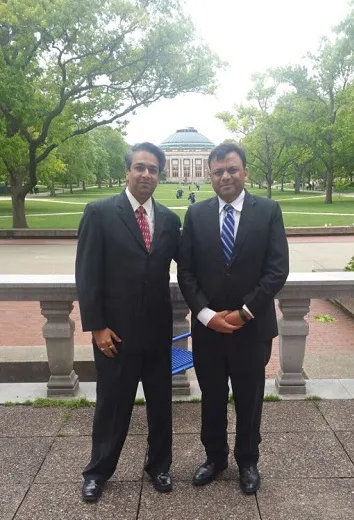
After ApnaCard, Arvind started e-enable Technologies which grew to become one of the biggest business intelligence (BI) companies in India. In five years, it had grown to more than 100-member strong and offered products like BI in a box. Arvind adds, “We were building data warehousing, data marts, visualising the data, making products out of it.”
It was mostly built around Oracle and SAP stacks. The company enabled market research companies to create data cubes for their customers and help them visualise it. FMCG companies, IT firms, banks were using the e-enable Technologies platform. The company was eventually acquired by 3i Infotech (previously ICICI Infotech) in 2007. Arvind says, “They (3i Infotech) saw what we were doing with the banks and wanted to have that competence in their portfolio.”
Arvind later on helped 3i Infotech develop as a product company. At its peak, it was one of the top software products companies of India.
Arvind used to get so preoccupied with his work that he often lost track of time. He recalls one incident when he reached late on the day of his engagement. He got so involved with debugging a problem that he reached for his engagement two hours late.
'Something I didn't understand'
In 2010, for the first time, Arvind decided to get into something he didn't understand completely.
He was involved a little bit (digital and analytics) with the general elections of 2009 but after the elections, BJP’s IT cell was dismantled. In 2010, he presented a small plan to the party leadership on what should be done using technology (data, digital, social media).
On 9th July 2010, he got a call to head the BJP IT cell. He was the only person in the IT cell when he joined. He had to build the team from scratch. There was no social media presence of the party and the website and email systems were broken as well. Most importantly, it was completely voluntary.
Arvind then started a new journey in life where he wanted to make a difference by using technology for three things:
- Politics
- Governance
- Public life
This remains his vision even today.
He saw that the BJP leadership awarded meritocracy and understood new ideas so he was keen to give this opportunity a shot.
Related read - Meet Mitesh Agarwal—the ‘brain’ of BITS who’s heading technology at Oracle India
Running the BJP IT cell like a startup
Arvind treated his stint at the BJP IT Cell like a startup. He started his work from a very small office in Delhi where internet cables used to get chewed off by the rats almost every single day. He says, “But we survived and the party leadership kept believing in us.”
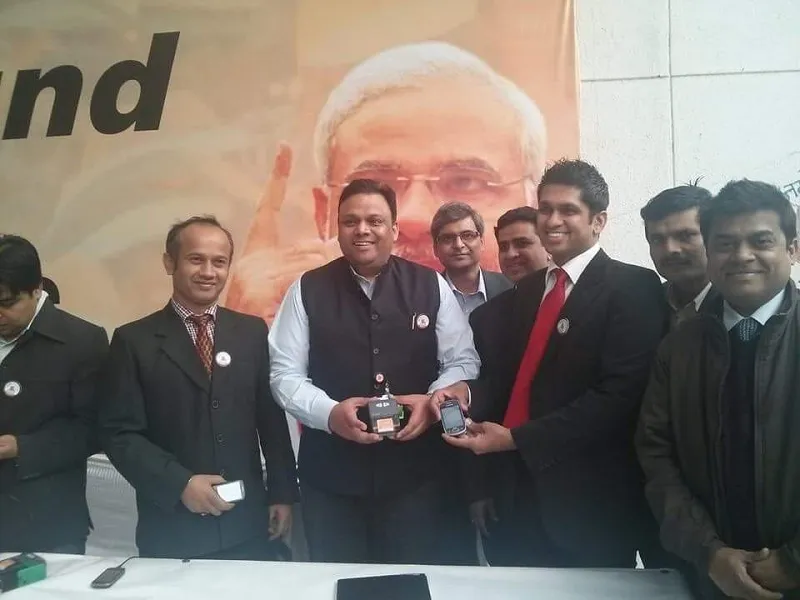
Arvind focused on creating multiple pillars of engagement -
- Get as much data as possible -- data from surveys, past elections, party membership, donor, volunteers. Put all the data in one place.
- Outreach -- social media, SMS.
This gave a strong fundamental to BJP’s success in social media.
He recalls the time when he set up the Facebook page and waited for 25 likes (after which he could claim the url name for the page). To keep it short and connect with the netizens he thought of an alphanumeric name, BJP4India, which later was used for party’s twitter handle and at other places.
Bringing the technology revolution by making one change at a time
In 2010, BJP became the first party to set up an online payment gateway for accepting party membership fee (Rs 5) and donations. Within two years of starting the online membership programme, BJP had 4-5 lakh online members. That served as the base for launching many campaigns later. Soon, everyone in the party started realising the power of technology.
Arvind convinced the party to rope in a few professionals and pay them. Even though they came at massive pay cuts, they had to be compensated for their work. Since the platform (IT cell) was also helping in getting revenues to the party (online donation), this seemed possible.
Arvind started getting BJP leaders on social media and get them verified. BJP was the only party which was listening to people on social media. But social media was just a part of a larger plan. Arvind knew that the majority of India still didn’t understand internet or analytics. Keeping this in mind, he developed LiveTalk (he also has an IP on this product).
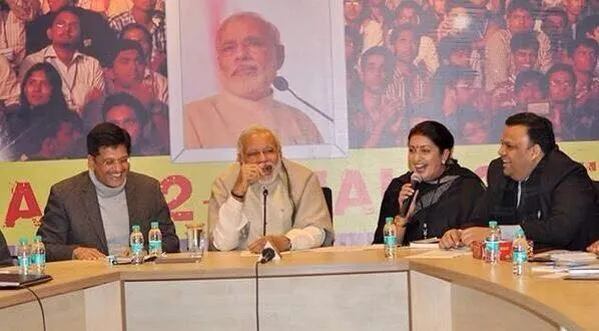
LiveTalk in 2012 was the technology powering first internet TV called Yuva TV (now BJPlive). It also enabled people to dial in and listen to full speeches live. Arvind recalls,
In one of the rallies in 2013 in Patna by the BJP prime ministerial candidate (Narendra Modi), while 200,000 people attended the rally; 100,000 watched it live and 125,000 heard it on LiveTalk (on call). It was not a free call.
Arvind and his team modernised party offices with video conferencing facility so that the party president could talk to any office.
In 2012 December, BJP used technology in the state elections (Gujarat) and saw the impact. Later on, in 2013, apart from the traditional campaign committees, the party also formed an information and social media committee. It was then clear that the party leadership was keen to explore this dimension in the general elections 2014.
The run - general elections 2014

Arvind made sure that the party used technology and data to communicate and to convert people into volunteers and volunteers into voters. He even ran a campaign internally called 'Organise online for success offline'. Like any company, the BJP IT cell used data to understand trends, pick markets correctly and run a sophisticated campaign.
The 25-member core team was running the digital campaign. Many of these had left their jobs at MNCs and volunteered to help. They set up the processes and formed templates of action.
BJP started using Whatsapp in the 2014 campaign. They even used mobile payments (m-POS) for donation and worked with Ezetap for this. Arvind and his team went around scouting for startups which could help solve their problems.
Eventually, they worked with three startups then. Arvind recalls,
We worked with Zipdial. In fact, it was one of the first (if not the first) missed call campaign they would have done. We also worked with a startup which rendered videos over a mobile phone. The third startup we started working with was Proof of Performance (we continue to work with them).
The first two startups were later acquired.
The IT cell was also responsible for a lot of real-time content creation -- infographics, facts, speeches getting summarised. They used a cloud-based tool by SAP for social media analytics, which helped them to automate listening processes, understand sentiments, peform sentiment aggregation on location/people and then respond based on liking and disliking.
During the elections, Arvind and his team hooked up with the campaign office twice a day at least. Arvind adds, “We also had to build a lot of trust within the party as we had access to a lot of sensitive data as well. We had to inculcate the culture of digital first in the party.”
What worked and what didn’t

The BJP IT cell had the social media policy in place in 2012-13 and they had started getting accounts verified on social media. They were on the top of social media on a real-time basis. Arvind adds, “If we saw someone misquoting the leaders or spreading wrong news, there were instant responses to it.”
They ran campaigns with auto responses on twitter. For example, if someone tweeted with a specific hashtag, they would get a personalised greeting from the then prime ministerial candidate with his/her name.
While a lot of things worked, there were many which didn't produce the desired results. The party ran a crowd-sourcing (donation) campaign where users could own a pixel of a photograph and pay for it. When it didn’t seem to generate a good response, the IT Cell was quick to drop it soon and move ahead. Arvind says,
The difference between a marketing campaign and election campaign is that in the latter there's no prize for coming second.
BJP was running a Yuva quiz on SMS where the quiz question was put on Twitter and Facebook and users had to send in their answers via SMS. After receiving the SMS, the party sent the follow-up questions via SMS. Around that time, TRAI stopped bulk messages from numbers. One had to convert it to a name which wouldn't accept responses. As a result, Arvind had to drop this idea.
Looking back, Arvind believes that his journey was in three phases:
- The first phase was till 2012 which saw a lot of experimentation, learning, fixing the base system, collecting data, instilling faith in the leadership that this can be done.
- From 2013 onward was the phase where the IT cell started eliminating the experiments which didn't work and also formed the team.
- 2014 was all about execution.
Arvind jokes and says that he ran a startup for five years successfully and then exited. He adds, “It was a complete startup culture where we were disrupting the way party, elections and politics are run.”
Arvind had done a deep study that 160 out of 543 seats will be impacted by digital (campaign) and his team focused on those seats. They won 130 of those. Arvind believes that 2019 general elections will be a lot more digital and mostly mobile, and the number of seats impacted by digital will be as high as 325. He says,
I still consider myself an entrepreneur. The five years in politics was also a startup experience which contributed to creating a good government. I'm very proud that I'm involved in putting technology in the political process. They ridiculed me in 2012 and now everybody is using it and it has become a benchmark campaign.
Also read - Meet Vijaya Kumar Ivaturi, the ex-CTO of Wipro, who’s ‘not business as usual’
Digital BJP
Internally, Arvind is now looking into Digital BJP, which is a futuristic looking project within the BJP. It focuses on building the same processes and systems at district levels as the ones at the central level. It’s aimed at having a knowledge system (or archive) within the party where real time information from grassroots comes to the top and is stored forever (including all the speeches). Arvind adds, "More than 400 district offices will have a system where their work, contribution, progress will be submitted and tracked in real-time and the party head office will have access to all the information in real-time."
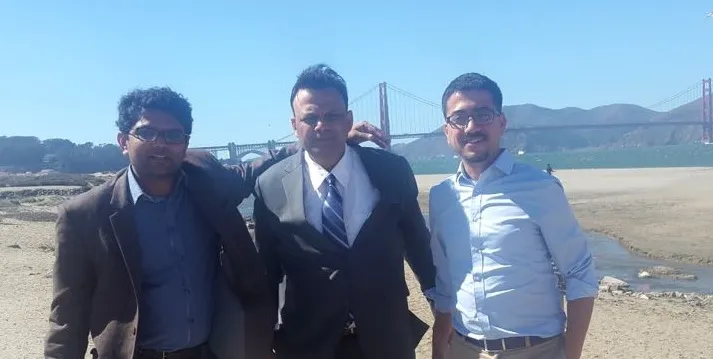
Politics to policy -- Digital India Foundation
In 2015, Arvind became a part of the Digital India Foundation and started taking thought leadership positions on the policy front with regard to net neutrality, inclusion, smart cities, digital payments, and cyber security. He wrote a thought paper on why innovation, research and technology will be the key pillars of digital India.
The investor, ecosystem enabler and the entrepreneur
Arvind believes that there’s a need to invest in creating products and platforms out of India. He got involved in iSpirt and became its founder circle donor member in 2013.
He’s heavily invested in the product startup ecosystem and technology governance ecosystem. He works with startups by funding and mentoring them. His current portfolio includes PinkShastra, Blubirch, SatvaCart, eLitmus, EasyGov, ToneTag.
He’s now relaunching ApnaCard as ApnaPay which will be targeted at helping small merchants solve problems of invoicing, payments, and taxation.
You may also like - The untold story of Alan Cooper, the father of Visual Basic
Up close and personal
Arvind is a very datadriven decision maker. So much that he had this written outside his college hostel room – “In God we trust, rest everybody get the data.” To make a decision, he puts people in perspective and judges a situation against his value system. He makes sure that there's no ego involved in it.
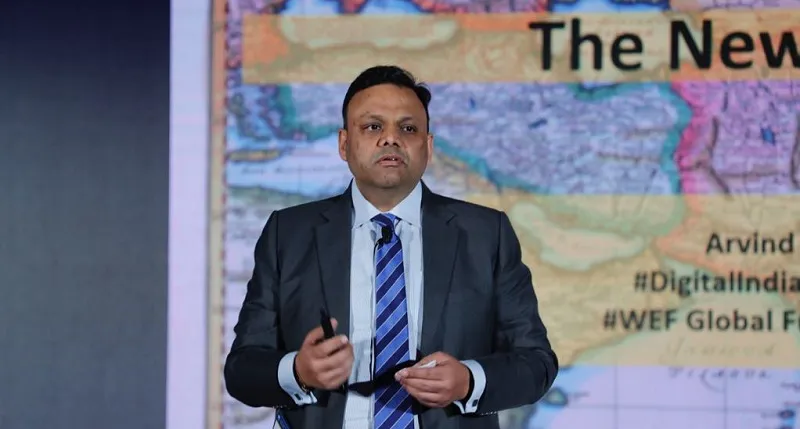
Arvind believes that while Silicon Valley has innovated for the top billion of the world, India will innovate for the next six billion. His association with BJP has made people recognize him with the party but sometimes they go ahead and paint him as a BJP person. He says, “I feel people haven't matured enough to understand that when you strengthen political processes you strengthen democracy.”
Arvind has his beliefs in right places. He says,
If BJP can use technology to disrupt itself and if India can undergo demonetization and still come out, all changes are possible. We just have to think.
You can follow Arvind on Twitter or connect with him on LinkedIn.
Trivia – Two years before Arvind, Nikesh Arora was the convener of the Kashi Yatra at IIT BHU







